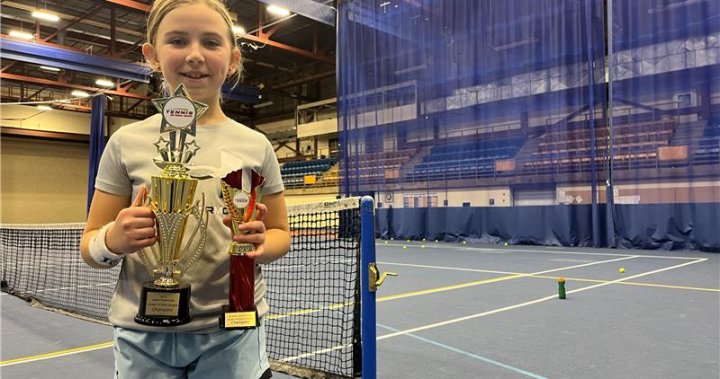The Aspiring Tennis Prodigy and the Indoor Facility Dilemma
Sophia Pavlovska, a prodigious 10-year-old tennis player from Moncton, New Brunswick, shines brightly on the courts, demonstrating remarkable talent and a burgeoning passion for the sport. Her achievements include numerous tournament victories within her province, culminating in a coveted invitation to the prestigious Little Mo Tournament in December 2024. This international event, renowned for showcasing promising young talent, serves as a testament to Sophia’s exceptional abilities and unwavering dedication to her craft. Sophia’s love for the game stems from its interactive and social nature, fostering camaraderie and friendly competition among players. Her enthusiasm and natural aptitude suggest a promising future in the world of competitive tennis.
However, Sophia’s journey towards tennis greatness faces a significant hurdle: the absence of a dedicated indoor tennis facility in Moncton. This lack of infrastructure poses a considerable challenge, especially during the harsh Canadian winters, limiting her training opportunities and impeding her progress. While her peers in other regions, such as Halifax, Nova Scotia, benefit from daily practice sessions spanning two to three hours, Sophia’s training regimen is severely curtailed by the lack of accessible indoor courts. This disparity in training opportunities creates a significant disadvantage for aspiring athletes like Sophia, hindering their ability to compete at the highest levels.
Sophia’s father, Borys, recognizes his daughter’s immense potential and firmly believes that with adequate training and support, she could reach national and even international prominence. He envisions her competing at the national level in the U-12 category, a goal that necessitates consistent and rigorous practice. The scarcity of indoor tennis facilities in Moncton forces families like Sophia’s to endure lengthy commutes to other cities, such as Fredericton, just to secure practice time. This arduous travel schedule not only consumes valuable time and resources but also places an added burden on families dedicated to nurturing their children’s athletic pursuits.
Mark Thibault, the Executive Director of Tennis NB, acknowledges the infrastructure deficit that hampers the development of young tennis talent in New Brunswick. He points out that many competitive players are forced to travel significant distances to access indoor training facilities, underscoring the urgent need for investment in local infrastructure. Thibault emphasizes the abundance of talented young players in the province who, with proper support and training resources, could achieve remarkable success. He advocates for the establishment of an indoor tennis centre in Moncton, recognizing its crucial role in fostering the next generation of tennis stars.
The lack of indoor tennis facilities in Moncton highlights a broader issue regarding the accessibility of sports infrastructure in smaller communities. While larger urban centres often boast state-of-the-art facilities, smaller cities and towns often lack the resources to invest in such infrastructure, creating a disparity in opportunities for aspiring athletes. This disparity can have a profound impact on the development of young talent, limiting their access to high-quality training and hindering their ability to reach their full potential. Investing in sports infrastructure in underserved communities is crucial not only for nurturing athletic talent but also for promoting healthy lifestyles and community engagement.
Sophia’s story serves as a compelling illustration of the challenges faced by young athletes in communities lacking essential sports infrastructure. Her talent and determination, combined with the unwavering support of her family, highlight the crucial role of accessible facilities in fostering athletic development. The establishment of an indoor tennis centre in Moncton would not only benefit Sophia and other aspiring tennis players but would also contribute to the growth of the sport and the overall well-being of the community. Investing in sports infrastructure is an investment in the future, creating opportunities for young athletes to thrive and inspiring them to achieve greatness.

